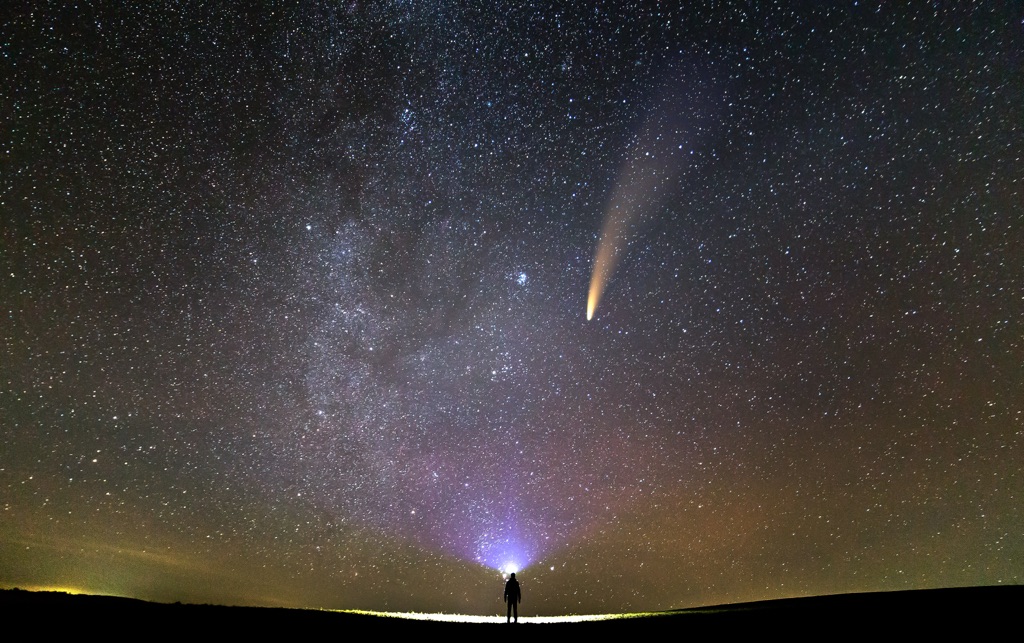Comets, often referred to as dirty snowballs, have fascinated humans for centuries. These icy, dusty travelers from the farthest reaches of our solar system provide a rare spectacle when they approach the Sun, leaving behind a glowing tail visible from Earth. Today, let’s explore what comets are, where they come from, and why they capture our imagination.
What is a Comet?
At their core, comets are large balls of dust, ice, and rocky material. The ice in them tends to melt when they come near the Sun, which creates the iconic glowing tail. There are two main regions where comets originate: the Kuiper Belt and the Oort Cloud. Comets from the Kuiper Belt are often referred to as short-period comets because their orbits take them around the Sun in shorter cycles. These comets are found just past Neptune and can return to Earth in a few years or decades.
On the other hand, the Oort Cloud is much farther out, about 50 times farther from the Sun than the Kuiper Belt. Comets from this region, called long-period comets, can take thousands of years to complete a single orbit. Some might even take hundreds of thousands of years, making their visits to Earth incredibly rare.
Comet Anatomy: What Makes Them Unique?
When a comet is drawn toward the Sun, gravity speeds it up and causes its icy surface to melt. This melting produces a tail that trails behind the comet, which is visible to us from Earth. In some cases, a comet may have two tails: a dust tail made of melting ice and dust particles, and an ion tail composed of charged particles that point away from the Sun due to solar winds.
A recent comet visible to the naked eye is C/2023 AG Atlas, offering a chance for stargazers to witness this beautiful phenomenon. It’s not common for comets to be so visible, making this event particularly exciting.
Famous Comets and Their Impact on Science
One of the most well-known comets is Halley’s Comet, which passes Earth every 75 years. Last visible in 1986, it is expected to return in 2061. Halley’s Comet has been observed since ancient times, and it was in the 18th century that astronomers discovered it was the same object reappearing at regular intervals.
In recent years, comets have been the focus of scientific missions. The European Space Agency’s Rosetta mission in 2014 successfully landed a probe on Comet 67P, giving scientists the first close-up view of a comet’s surface. The findings from this mission, including the detection of organic materials and dust, have added to our understanding of the early solar system.
How to Watch a Comet
If you’re lucky enough to be in the northern hemisphere, C/2023 AG Atlas will be visible until October 26th. To view it, find a dark, flat area away from city lights. Look towards the constellation Virgo in the west after sunset. Bringing binoculars or a telescope will enhance the experience, and using a stargazing app can help you locate it more easily.
In conclusion, comets are more than just icy travelers—they offer insights into the formation of our solar system and provide opportunities for both scientific study and awe-inspiring stargazing experiences. Cell phone cameras also are able to see them better than the human eye. You can increase the slow exposures to more than 3 seconds (the default) to get better photos. So grab your binoculars, head to a dark spot, and witness a piece of the universe in motion.

